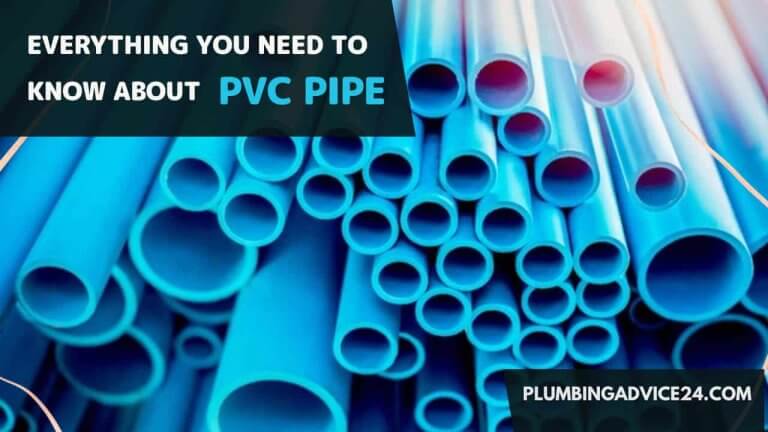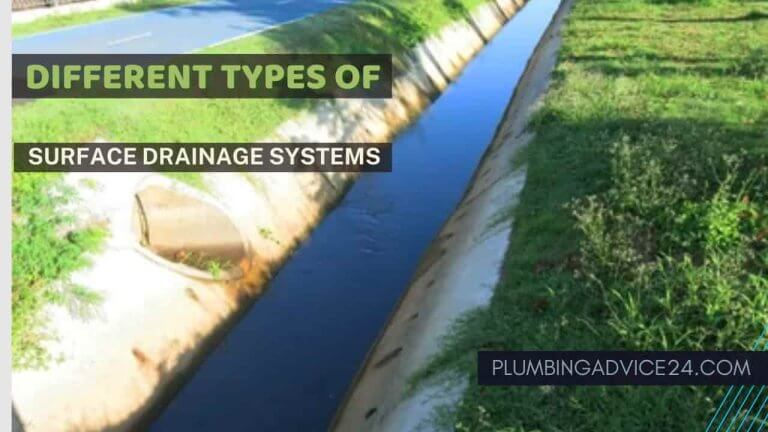Everything About HDPE Pipe | What Is HDPE Pipe | HDPE Pipe Sizes | HDPE Pipe Price
High-density polyethylene (HDPE) pipe is the ideal choice of piping material for many applications serving oil and gas gathering, potable water, wastewater, mining, and industrial systems, power and communications, and natural gas distribution.
HDPE pipe resists chemicals, corrosion, physical damage, and more to provide a long-lasting, cost-effective piping system. Apart from having many advantages over other pipes, these pipes are easy to install, making them an ideal choice for DIY.
So let’s know more about HDPE pipes. In this, we will discuss what these pipes are, how they are made, their uses, how they can be measured, their dimension chart, their cost, advantages, and disadvantages, etc. This article is going to be very useful for you, so you should read this article completely.
What Is HDPE Pipe?
High-density polyethylene (HDPE) is a plastic resin made by copolymerization of ethylene and small amounts of other hydrocarbons. It is a type of flexible plastic pipe used for liquid and gas transfer and is often used to replace aging concrete or steel pipelines. Made from thermoplastic HDPE (high-density polyethylene), its high level of permeability and strong molecular bonding make it suitable for high-pressure pipelines.
HDPE pipe is very durable and flexible and can be bent on-site to a radius of twenty-five times the nominal pipe diameter – for SDR11 and SDR17 pipe, at or below 20°C ambient temperature. This provides large cost savings compared to various pipe systems, some of which require glued fittings, restraints, or thrust blocks for small changes in direction.
High-density polyethylene pipe is strong, durable, flexible, and lightweight. When joined together, HDPE offers zero leak rate due to the seamless nature of the pipe system. HDPE pipe offers a more environmentally sustainable footprint as it is non-toxic, corrosion and chemical-resistant, has a long lifespan and is suitable for trenchless installation methods.
Due to the HDPE pipe’s high impact resistance and flexibility, it is suitable for installation in dynamic soils, including earthquake-prone areas. HDPE pipe has a very high flow capacity due to its smooth bore and end-to-end jointing methods. This pipe does not corrode in the environment and will maintain its flow capacity over time, unlike ferrous piping systems, which will corrode and create internal resistance to the fluid flowing through it.
In addition, HDPE pipe being a pipe made only of polyethylene, this material gives the pipes some special features that create advantages, and these advantages lead to the popularity of polyethylene pipes.
Must Read : What Is Plumbing Pipe | 22 Different Types of Plumbing pipes
What Is HDPE Pipe Made Of?
HDPE pipe is usually black in color. The black color indicates the addition of carbon black, which is only 3-5% and protects against UV light. Other colors are available but less common. Often colored or striped HDPE pipe is also found. These pipes consist of 90-95% black material, with only a colored skin or 5% outer stripe.
To create a length of pipe, HDPE resin is heated and extruded through a die, which determines the diameter of the pipeline. Pipe wall thickness is determined by a combination of die size, screw speed, and haul-off tractor speed.
The following steps are considered for the HDPE pipe manufacturing process:
- First, the HDPE raw material is drawn from the silo into a hopper dryer, which removes any moisture from the pellets.
- It is drawn into the blender by a vacuum pump, where it is heated by a barrel heater.
- The HDPE material is melted at about 180 °C (356 °F), which allows it to be fed through a mold/die, which gives the molten material a spherical shape.
- After passing through the die, the newly formed pipe quickly enters the cooling tank, which immerses or sprays water on the outside of the pipe, which lowers the temperature of each pipe by 10-20 degrees.
- Due to the high specific heat capacity of HDPE, the pipe must be cooled in stages in order not to distort the shape, and by the time it reaches the “haul-off tractor,” it is hard enough to be gently pulled by 2-3.
- The size, type, date and manufacturer’s name, etc., are then printed on the pipe with a belt laser or powder printer. Finally, it is cut into the required length by a cutter machine.
Must Read : What Is Plumbing Pipe Materials | What Is Used to Make Plumbing Pipes
HDPE Pipe Lifespan
HDPE pipes have been used for nearly half a century, from the first water pipes to gas and other fields. This pipe is very durable and flexible and can be bent on-site to a radius of twenty-five times the nominal pipe diameter. The lifespan of HDPE pipes is 50 years, but if installed properly, they can last up to 100 years.
What Is HDPE Pipe Used For?
HDPE pipe is a flexible plastic pipe made of thermoplastic high-density polyethylene that is widely used for low-temperature liquid and gas transfer. HDPE pipe is a very economical and durable solution for a wide variety of piping needs in all sectors. In the ground source geothermal industry, HDPE was one of the earliest piping materials used.
Made from polyethylene, it is tested and proven effective for use in in-ground, above-ground, surface-laid, floating, slip-lined and marine applications. In recent times, HDPE pipes have been widely used to carry potable water, hazardous waste, various gases, slurry, firewater, rainwater, etc.
The following are the HDPE Pipe application:
- Geothermal Industry
- Agriculture & Irrigation
- Urban and Rural Water Supply
- Domestic Sewage System
- Sanitary System
- Waste Water Mains
- Municipal Storm Drains
- Oil and Gas Transfer
- Petrochemical Industry
- Fertilizer Industry
- Air-Conditioning & Refrigeration
- Extraction of Fumes
- Telecommunication, as Conduits for Ofc
- Conduits for Cables
- Power Stations
- Paper Mills
- Surface & RainWater
Must Read : What Is a Sewer Line | Types of Sewer Pipes | Best Sewer Line Insurance Company
How to Measure HDPE Plumbing Pipes?
Determining the SDR of an HDPE pipe is quite simple. The formula is SDR = D/s, where ‘D’ is the outside diameter of the pipe (in millimeters or inches), and ‘s’ is the wall thickness of the pipe (in millimeters or inches). As the SDR decreases, the wall thickness increases. The tensile strength of a pipe increases as its thickness increases, which is the pipe’s ability to withstand pressure.
Measure the Outside Diameter (OD) of your HDPE pipe or pipe fitting:
- Wrap a string around the pipe.
- Mark the point where the string touches together.
- Use a ruler or measuring tape to find the length between the tip of the string and the mark you made (circumference)
- Divide the circumference by 3.14159.
HDPE Pipe Sizes
Polyethylene – PE – is a popular material and is commonly used as water pipes in the PE 50, PEH, or HDPE (High-Density PolyEthylene) qualities.
PE pipes are produced in different pressure grades – PN grades – indicating the pressure in bars the pipe supports with water at 20° C.
HDPE pipe dimensions are as below:
| SDR26 | SDR21 | SDR17 | SDR13.6 | SDR11 | SDR9 | SDR7.4 | ||||||||
| PE100 | PN 6.3 | PN 8 | PN 10 | PN 12.5 | PN 16 | PN 20 | PN 25 | |||||||
| SIZE | MIN WALL | MEAN I.D. | MIN WALL | MEAN I.D. | MIN WALL | MEAN I.D. | MIN WALL | MEAN I.D. | MIN WALL | MEAN I.D. | MIN WALL | MEAN I.D. | MIN WALL | MEAN I.D. |
| 20 | 1.6 | 16.7 | 1.6 | 16.7 | 1.6 | 16.7 | 1.6 | 16.7 | 1.9 | 16.1 | 2.3 | 15.2 | 2.8 | 14.2 |
| 25 | 1.6 | 21.7 | 1.6 | 21.7 | 1.6 | 21.1 | 1.9 | 21.1 | 2.3 | 20.2 | 2.8 | 19.2 | 3.5 | 17.7 |
| 32 | 1.6 | 28.7 | 1.6 | 28.7 | 1.9 | 28.1 | 2.4 | 27.0 | 2.9 | 26.0 | 3.6 | 24.5 | 4.4 | 22.8 |
| 40 | 1.6 | 36.7 | 1.9 | 36.1 | 2.4 | 35.0 | 3.0 | 33.8 | 3.7 | 32.3 | 4.5 | 30.6 | 5.5 | 28.5 |
| 50 | 2.0 | 45.9 | 2.4 | 45.0 | 3.0 | 43.8 | 3.7 | 42.3 | 4.6 | 40.4 | 5.6 | 38.3 | 6.9 | 35.6 |
| 63 | 2.4 | 58.0 | 3.0 | 56.8 | 3.8 | 55.1 | 4.7 | 53.2 | 5.8 | 50.9 | 7.1 | 48.1 | 8.6 | 45.1 |
| 75 | 2.9 | 69.1 | 3.6 | 67.6 | 4.5 | 65.7 | 5.5 | 63.6 | 6.8 | 60.9 | 8.4 | 57.5 | 10.3 | 53.6 |
| 90 | 3.5 | 82.8 | 4.3 | 81.1 | 5.4 | 78.8 | 6.6 | 76.3 | 8.2 | 72.9 | 10.1 | 68.6 | 12.3 | 64.5 |
| 110 | 4.3 | 101.2 | 5.3 | 99.1 | 6.6 | 96.4 | 8.1 | 93.2 | 10.0 | 89.3 | 12.3 | 84.4 | 15.1 | 78.6 |
| 125 | 4.8 | 115.3 | 6.0 | 112.8 | 7.4 | 109.8 | 9.2 | 106.0 | 11.4 | 101.4 | 14.0 | 96.0 | 17.1 | 89.5 |
| 140 | 5.4 | 129.1 | 6.7 | 126.4 | 8.3 | 123.0 | 10.3 | 118.8 | 12.7 | 1 13.8 | 15.7 | 107.5 | 19.2 | 100.2 |
| 160 | 6.2 | 147.5 | 7.7 | 144.4 | 9.5 | 140.6 | 11.8 | 135.8 | 14.6 | 129.9 | 17.9 | 123.0 | 21 .9 | 114.7 |
| 180 | 6.9 | 166.2 | 8.6 | 162.6 | 10.7 | 158.2 | 13.3 | 152.7 | 16.4 | 146.2 | 20.1 | 138.4 | 24.6 | 129.1 |
| 200 | 7.7 | 184.5 | 9.6 | 180.5 | 11.9 | 175.7 | 14.7 | 169.8 | 18.2 | 162.4 | 22.4 | 153.6 | 27 .3 | 143.4 |
| 225 | 8.6 | 207.7 | 10.8 | 203.1 | 13.4 | 197.6 | 16.6 | 190.9 | 20.5 | 182.7 | 25.1 | 173.0 | 30.8 | 161.3 |
| 250 | 9.6 | 230.7 | 11.9 | 225.9 | 14.8 | 219.8 | 18.4 | 212.2 | 22.7 | 203.2 | 27.9 | 192.3 | 34.2 | 179.2 |
| 280 | 10.7 | 258.6 | 13.4 | 252.9 | 16.6 | 246.2 | 20.6 | 237.8 | 25.4 | 227.7 | 31.3 | 215.3 | 38.3 | 200.7 |
| 315 | 12.1 | 290.7 | 15.0 | 284.7 | 18.7 | 276.9 | 23.2 | 267.4 | 28.6 | 256.1 | 35.2 | 242.2 | 43.0 | 226.1 |
| 355 | 13.6 | 327.8 | 16.9 | 320.9 | 21.1 | 312.0 | 26.1 | 301.5 | 32.2 | 288.7 | 39.6 | 273.2 | 48.5 | 254.6 |
| 400 | 15.3 | 369.3 | 19.1 | 361.3 | 23.7 | 351.7 | 29.4 | 339.7 | 36.3 | 325.2 | 44.7 | 307.6 | 54.6 | 287.0 |
| 450 | 17.2 | 415.5 | 21.5 | 406.5 | 26.7 | 395.6 | 33.1 | 382.1 | 40.9 | 365.8 | 50.3 | 346.0 | 61.5 | 332.8 |
| 500 | 19.1 | 461.7 | 23.9 | 451.7 | 29.6 | 439.7 | 36.8 | 424.6 | 45.4 | 406.5 | 55.8 | 384.7 | – | – |
| 560 | 21.4 | 517.2 | 26.7 | 506.1 | 33.2 | 492.4 | 41.2 | 475.6 | 50.8 | 455.5 | – | – | – | – |
| 630 | 24.1 | 581.8 | 30.0 | 569.5 | 37.2 | 554.1 | 46.3 | 535.2 | 57.2 | 512.3 | – | – | – | – |
| 710 | 27 .2 | 655.6 | 33.9 | 641.6 | 42.1 | 624.3 | 52.2 | 603.1 | – | – | – | – | – | – |
| 800 | 30.6 | 738.8 | 38.1 | 723.0 | 47.4 | 703.2 | 58.8 | 680.0 | – | – | – | – | – | – |
| 900 | 34.4 | 829.5 | 42.9 | 813.8 | 53.5 | 791.6 | – | – | – | – | – | – | – | – |
| 1000 | 38.2 | 923.0 | 47 .7 | 904.2 | 59.3 | 879.8 | – | – | – | – | – | – | – | – |
HDPE Pipe Cost
HDPE pipe price per foot is between $2.74 – $59.42. It is a type of PE pipe. However, HDPE pipes are more durable than other PE pipes because they come with high melting and impact points. HDPE pipe is tough, resistant to chemicals, resistant to corrosion, and light in weight.
HDPE pipes are manufactured using petroleum and are stronger and harder than PVC pipes. This type of piping is semi-crystalline and tends to be more expensive than PVC pipes. When comparing failure ratings when exposed to events like rain, stress, wind, heat, or cold, HDPE is proven to be more durable.
Must Read : What is Plumbing Tools | 31 Types of Plumbing Hand Tools
Advantages of HDPE Pipe
HDPE is a plastic with characteristics such as flexibility and corrosion resistance, which make it an ideal material for transporting water. It is also very easy to install yourself, making it a good choice of material for DIY. High-density polyethylene pipes are known for their high tensile strength, durability, flexibility, and lightweight. So let’s know more about the HDPE pipe benefits.
The HDPE pipe advantages are as follows:
- High-density polyethylene (HDPE) pipes are effective for the large-scale transfer of fluids as they can withstand high pressures. They are not affected by rust due to their thermoplastic quality. Unlike traditional metal pipe fittings, HDPE pipes do not rust, corrode or rot. HDPE pipes are also resistant to biological growth, eliminating costly problems associated with corrosion and fouling.
- HDPE Pipe is joined by a heat fusion process that forms leak-free joints. This design eliminates the potential leak points every 20 feet, which can occur with PVC & ductile iron pipe.
- HDPE is lightweight & does not require the use of heavy lifting equipment for installation. It reduces the need for fittings, is excellent in shifting soils & performs well in earthquake-prone areas. The pipe’s flexibility solves many unique problems that cannot be fixed with rigid concrete, PVC, or ductile iron pipe.
- Pipes made from HDPE are very resistant to freezing, as there is no expansion or contraction during the freezing process. This makes HDPE an ideal pipe material in areas where water freezes.
- HDPE pipes can also be used in other types of pipelines, including drinking water. It protects the pipe from corrosion from most acids and alkanes, making it an ideal material for indoor or underground use.
- HDPE pipe installation is cost-effective and has long-term cost benefits due to its physical properties, leak-free joints, and reduced maintenance costs.
- HDPE pipes are resistant to microorganisms and rodent attacks. Due to the lack of nutritional value and the stiffness of HDPE and fittings, rats cannot damage them.
- HDPE is resistant to organic solvents, ultraviolet rays, cold and extreme heat, etc., and has a service life of 50-100 years which is much longer than other pipe materials.
Must Read : What Is Plumbing Trap | 15 Different Types of Plumbing Traps
Disadvantages of HDPE Pipe
Despite the many advantages associated with high-density polyethylene pipes, this type of pipe is not resistant to oxidizing acids, ketones, and chlorinated hydrocarbons, according to Manufacturers Monthly. Also, these pipes have some disadvantages, so let’s look at the disadvantages of HDPE pipes as well.
The HDPE pipe disadvantages are as follows:
- As the raw material in HDPE pipe is petroleum in origin, it is highly flammable. Due to this, it has to be kept away from flammable materials.
- HDPE pipes do not withstand stress and may crack under certain conditions.
- HDPE pipes are not suitable for installation at high temperatures in the presence of direct sunlight like other plastic pipes.
- HDPE pipes are expensive since their raw material is petroleum, their price fluctuates from time to time, and the cost of pipe fittings is still very high.
- Polymers, like many other plastics, take a long time to break down, so they cannot be disposed of quickly, and using incineration to dispose of them can emit harmful gases.
Must Read : What Is a Wrench | 33 Types of Wrenches | Best Company for a Wrench
What Is a HDPE Pipe?
HDPE pipe is a type of plastic pipe that’s used to transfer fluids and gases or to replace aging concrete or steel mains pipelines. HDPE pipe (which stands for high-density polyethylene pipe) is flexible, highly impermeable, and suitable for high-pressure pipelines.
Most commonly, HDPE pipes can be seen in use for water mains, gas mains, sewer mains, slurry transfer lines, rural irrigation, fire system supply lines, electrical conduits, communication conduits, and drainage pipes.
What Is HDPE Pipe Specifications?
HDPE pipe shall have a minimum density of 0.955 grams per cubic centimeter. All HDPE pipes and fittings shall have a Hydrostatic Design Basis (HDB) of 1,600 psi. Meeting the requirements of Standard Dimension Ration (SDR) 17 as minimum strength.
What Is PE 100 in HDPE Pipe?
PE100 is a version of HDPE and stands for Poly Ethylene with a Minimum Required Strength (MRS) of 100 at 50 years and 20º according to ISO4427. PE100 in HDPE pipe is easy to install, light, flexible, corrosion-free and has a service life of up to 100 years. It can be jointed using butt fusion or electrofusion to create a leak-free pressure network for gas or water.
What Is SDR in HDPE Pipe?
SDR stands for “standard dimension ratio” and is used to rate pressure piping. It’s an inverse relationship, though. The higher the SDR, the lower the pressure rating. SDR indicates the amount of pressure (in PSI) an HDPE pipe can withstand.
What Is the Meaning of HDPE Pipe?
HDPE pipe meaning is high-density polyethylene. High-density polyethylene (HDPE) piping systems have been used for municipal and industrial water applications for over 50 years. Within PPI’s Building & Construction Division, HDPE pipes are used for ground source geothermal applications, also known as earth energy or geo-exchange systems.
What Is PE in HDPE Pipes?
PE in HDPE pipes is polyethylene, and It is a polymer. Polyethylene is by far the most common type of consumer plastic and is used in many everyday materials. It is a thermoplastic product, meaning that it can be melted into a liquid and then cooled back into solid many times over.
What Is PE 80 in HDPE Pipe?
PE80 has been widely used for gas, water, and industrial applications for many years and is most commonly named MDPE (Medium Density Polyethylene). However, PE80 could also be HDPE (High-Density Polyethylene). PE80 pipes are often rated SDR11 PN12 and have a minimum required strength (MRS) of 8.0MPa (Megapascal).
What Is DR 11 HDPE Pipe?
DR11 stands for the size dimension ratio of 11. You must divide the OD(mm) of the HDPE piping by the SDR to give you the pipe wall thickness. E.g., divide 180mm(OD) by 11, giving a wall thickness of 16.4mm. With HDPE piping, SDR 11 gives you a pressure rating of PN16 or 16 bar.
What Is HDPE Tubing?
HDPE tubing is used across the globe for applications such as water mains, gas mains, sewer mains, slurry transfer lines, rural irrigation, fire system supply lines, electrical and communications conduit, and stormwater and drainage pipes.
What Does HDPE Pipe Mean?
HDPE pipe means High-Density Polyethylene Pipe. It is a type of flexible plastic pipe used for fluid and gas transfer and is often used to replace aging concrete or steel mains pipelines.
What Is Black Poly Pipe?
Black polyethylene, or PE, the pipe comes in very long rolls and is used in many areas for the water main between the meter and the house and for sprinkler systems. Just like any other type of pipe, poly pipe does not last forever and can develop leaks with time and with the help of tree roots.
What Is Blue Line Poly Pipe?
Blue polyethylene pipe and tubing have been designed specifically for cold water pressure application, being produced using a custom Dark Blue UV Stabilization Color Package that greatly increases UV protection.
If You Liked This Post? So Share It with Your Friends
Suggested Articles:
- What Is a PVC Pipe | How to Measure PVC Pipe Size | PVC Pipe Installation Cost
- What is CPVC Pipe | CPVC Pipe Manufacturing Process | CPVC Pipe Applications | CPVC Pipe Dimensions | CPVC Pipe Cost
- What is uPVC Pipe | uPVC Pipe Manufacturing Process | uPVC Pipe Applications | uPVC Pipe Dimensions | uPVC Pipe Cost
- What is PE Pipe | PE Pipe Manufacturing Process | PE Pipe Applications | PE Pipe Dimensions | PE Pipe Cost
- Difference Between PVC and CPVC | Which Is Better PVC or CPVC Pipe
- What is PEX Pipe | PEX Pipe Manufacturing Process | PEX Pipe Applications | PEX Pipe Dimensions | PEX Pipe Cost
- What Is ABS Pipe | Why Is ABS Pipe Prohibited | How to Measure ABS Pipe | ABS Pipe Installation Cost
- Difference Between ABS and PVC | How to Connect ABS to PVC Pipe | Which is Better ABS or PVC Pipe















